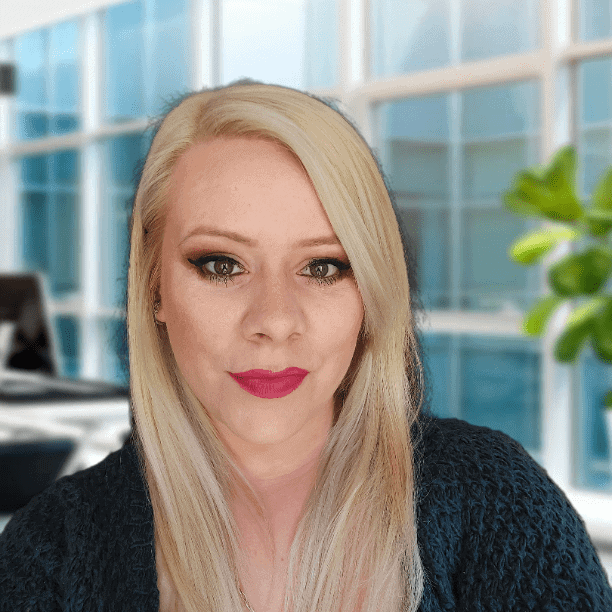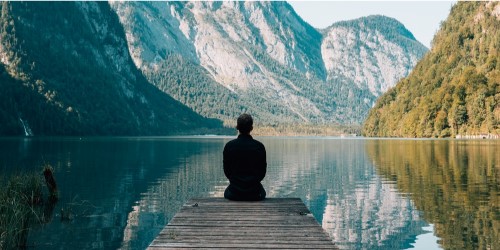
In the realms of contemporary spirituality, few figures command as much respect and admiration as Igor Kufayev. A revered spiritual leader, author, and artist, Kufayev is recognized as one of the most significant nondual teachers across Europe and the United States. As a tantric-energy-transmission lineage holder, his teachings and presence resonate deeply within his community, radiating the ancient prana-shakti of his tradition. In this illuminating Mystic Mag‘s interview, we explore the profound insights and transformative practices that define Igor Kufayev’s path. We delve into the essence of his latest book, “Camatkāra: The Hidden Path,” a work that transcends mere words, offering a living transmission of energy and wisdom. Join us as we embark on a journey of self-discovery and spiritual awakening with Igor Kufayev, uncovering the secrets to embodying the divine and experiencing the fullness of life.
How did your early exposure to Perennial Philosophy and the teachings of German Existentialists, Pre-Socratics, and Sufi Mystics shape your worldview and artistic expression?
I’m not sure if it really formed or shaped my artistic unfoldment, but I would hopefully make it clearer as I cast my memory back to the time when all this was in formation, during the formative years. All this was from approximately my early teens through my late teens, by then there was already a trajectory of where my life was going – at least how that was perceived. So approximately at the age of 12, I met this man who became my mentor, and he was a martial artist; he also played music and painted. He was a bit of a persona non grata – he was expelled from the art university in my hometown of Tashkent and instead created this meeting between like-minded people, at the studio, under the umbrella of what back then in the Soviet Union were these clubs, these communities for local enterprises.
On the outside, it was fairly straightforward, but a lot of very interesting people were flocking into his circles. I was among the younger generation in this circle, with others around my age, give or take a few years, and in no time, I kind of realized that that’s what I want to do for the rest of my life. This became very, very clear. There was this tragic unfoldment, as my mentor was killed in what purportedly back then was perceived as an involvement with some of the circles that wouldn’t leave him alone – call it the local mafia or whatever. He was very outspoken, very courageous – and exuded this sense of strength and authority. Kids really loved him – and when I say kids, also people who came to his studio after hours. These were people in their 20s, all the way to their early 30s. So I was exposed to this whole world of those who were looking for outlets outside of what was back then considered to be the only given way of how to express oneself in a given culture. This was during the time of the Cold War, during the time of a kind of insulation of what the Soviet Union as a country was. But at the very same time, there was a lot of that brewing within; maybe because of that lack of the possibilities to freely travel, there was this fertile ground for a lot of homegrown expressions in various fields, rising, seemingly out of the blue. Popping out, almost like the tiny little flower breaks the pavement of the asphalt to the light, if I were to give that metaphor.
So I met people interested in Oriental philosophies, Buddhism – and obviously martial arts of different kinds. Kung fu and karate were very much in vogue at the time, among the youth. And then of course all the cult writers and philosophers of the late 19th and early 20th centuries: we’re talking about Kierkegaard, Nietzsche, Schopenhauer, and later on, Camus and Derrida – and all this of course was distributed in self-printed formats, on Xeroxes, because these books were not available. It was not like you could just go into a shop and buy them. I remember when I was reading Thus Spoke Zarathustra, by Nietzsche, I had to make sure it was in proper sequential manner because the pages were so messed up. So it was a very interesting and exciting time.
So to answer your question with however degree of clarity and accurately enough would be difficult now, because all this was going into that – all this melting pot of ideas, environment, and these person-to-person interactions were contributing to that unfoldment. And so, by the age of approximately 18, when I was already a student of the art college where I was for three years, just before my compulsory military service at the time, I knew that art was what I would be doing for a living – in fact, I wasn’t even thinking in these terms. Life was formed in a very different fashion. I wasn’t even thinking in terms of “making a living.” I should really reiterate myself: art and life were synonymous for me. So my life was in that whole environment. And of course, it was a very rich environment. The art college was just an eye-opening experience. After leaving primary school at around the equivalent of 8th grade, I decided to study art professionally. I became a student of this art college, and there were of course young people of various generations. No longer are you in a class with people who are of the same age. I was there as a 15-year-old, but there was a guy who was 20, and another, 25. People were almost in their late 20s, because this was the nature of this particular institution. So all that melting pot of course contributed to a certain trajectory of how my life would pan out.
And underneath all of that was this bubbling sense of an existential quest, which, earlier on, was spurred by my mentor’s brother who took me under his wing after his brother was brutally killed. He kind of took me under his wing – I was an only child and brought up by my mother, without a father (I never met my father) – I wouldn’t go as far as the parental role at all, but more like that mentorial role. And he started passing me these books; by then, he would go to Saint Petersburg, bring them back, and these were already proper printed books. I had this copy of Søren Kierkegaard in my hands, or then the first copy of Schopenhauer – I even remember the format of these early publications in the Russian language, translated from the originals. This was my initiation into the world of existentialists. So, in no time of course, all that was spun out into great interests in philosophy, which continued all the way into my late 20s. And I often speak, when I speak about this, with a trajectory of how it all unfolded, culminating in perhaps the last great philosopher of the Western world – Martin Heidegger. And for me, personally, this was also a culmination of my interests in Western philosophy per se. Because then, a radical departure towards a different world took place. By then, I was already dabbling in Indian philosophy and I was already initiated into Transcendental Meditation. So there was this cultural adjustment taking place. Most importantly, by my mid-20s, I was already living in London, making a living as a young artist. London had become the capital of the arts, surpassing New York in the 90s.
So the Sufi connection of course here, I must add, was purely due to where I grew up, where I was brought up. Central Asia, and Uzbekistan in particular, has a very rich history associated with this elusive, what cannot even be called tradition – because it defies tradition, it transcends tradition. These various greatest Sufi orders in fact originated from that whole acumen of Central Asia. Just to give you an example, one of the most well-known Sufi orders which is active today, known as Naqshbandiyya Mujaddidiyya, originated in Bukhara in the 12th century. And there is a mausoleum of a great saint who is venerated in many cultures, and people pay homage and tribute and flock to Bukhara today, from all over the world. So this Sufi tradition was never even considered by me as a newly found interest, or something that came from the outside. It was inborn, homegrown, something which I would even daresay DNA-carried in terms of that genetic heritage.
Can you elaborate on how your training at the Saint Petersburg Academy of Fine Arts and your career as an international artist influenced your spiritual journey?
My time in Saint Petersburg was brief but profoundly rich. In fact, when I first had the chance to reflect on it, while organizing what would go into a CV or creating a basic biography, I was startled to realize it was only a phase which was barely two years in all. It felt much longer because in terms of everything that happened during that time when I was there.
I visited Saint Petersburg in my late teens, a city that’s incredibly difficult not to fall in love with. It’s one of the most beautiful cities in the world, in terms of aesthetic visual experience of it, because it was conceived as a work of art, as one project. There’s nothing about Saint Petersburg that organically grew over a period of time, like how many other cities in the world came into being. It was just a decision, a whim, a dream of a single person, Peter the Great, who decided he was going to build the most beautiful, most important city in that part of the world. Built on marshland, purportedly on the sand that was brought there and with the bones of peasants, as the traditional saying goes. But the city itself is magnificent. It’s crazy as well. It has this air and allure of poetry, magic, and tragedy. It’s where Dostoyevsky wrote his most important works and is associated with the crème de la crème of Russian literature, arts, and social movements.
For a young artist in their late teens and early 20s, it’s a dream come true. I was a student accepted without exams directly into the second year at the Academy of Fine Arts. Previously, I was a student at the Theater and Art Institute in Tashkent, Uzbekistan. My works impressed the admissions committee, and I was admitted directly to the second year, which was apparently quite a rare event given the high competition in Saint Petersburg at the time where all the talented artists from all over the Soviet Union would flock to try their luck.
But, to me, the most important gift being in Saint Petersburg was the proximity to the Hermitage Museum and its fine collection of works of art, particularly strongly representing the Western European paintings because it was all based on one of the largest collections that Catherine the Great purchased from Frederick II.
For instance, the collection included the finest assembly of Rembrandt’s works in any single museum. It was just astonishing. It took me a while to fully ascertain the value of the Hermitage collection when I already traveled later on in my life, in Paris, Amsterdam, Madrid, and Rome, and I would look back and see that Rembrandt was not represented in such rich collection anywhere, except perhaps in his own city of Amsterdam. Of course, this immediately prompted me to embark on a series of works to copy and learn from the Old Masters, and that in itself was a very illuminating experience. Maybe a word or two to the nature of that experience…
I’ve started deep in the winter months. And so, in order to have those few hours before the opening of the Hermitage to the public, one would need to get there at 6:00 in the morning sharp, where elderly ladies who were working at the Hermitage known as “Night Babushkas,” would be assigned to each young artist to walk him along the lengthy corridors and rooms, to a particular place where he would carry on his work based on the license received from the respective art institution – and I had the license from the Academy of Fine Arts. And one would install one’s tools and equipment and spend those magical few hours, before the museum would open its doors to the general public, in the deep of the night – before the sunrise. Totally alone, in that often magnificent setting of the Hermitage rooms.
I chose two particular paintings by Rubens: “Nessus and Deianira,” a mythological subject of the centaurs stealing Hercules’s wife, Deianira, and being slain by Hercules’s arrow straight into his heart; and “Head of a Franciscan Monk,” just a tiny little portrait. And it was this metaphysical experience of connecting to the work of art, at that level, in that setting. It gave me this kind of, I would dare say, spiritual experience of that intimacy. It wasn’t just the technical abilities that were disclosed to me in the moment of that intimate connection, but something else altogether. Something that I cannot really put my finger on or dress into language. Maybe it was being a youth, or maybe all of that combined? I don’t even know that if I were to re-enter that today, would I experience it in the same way? Probably not. But at the time, it was what it was – a truly intimate experience, one of a kind, and also where some kind of passage, dare I say transmission, took place. I would dream when I would go back there, at night, where I would be continuing working. And there was this one dream when a great master came from the back, kind of approving of me and disclosing these subtle sorts of insights of the craft. This was just a formidable experience.
What type of services do you offer?
The services I offer include retreats, which are live events where this work can be experienced firsthand. These retreats are perhaps the most important offering because they are based on the transformative nature of bringing a group together equipped with a methodology of transcendence. And the sum total of its components supersedes and exceeds the value of what each individual can achieve alone. I’ve been conducting these group programs for over 10 years in locations such as California, Arizona, British Columbia, and now mostly in Mexico. We have an upcoming program this autumn in the United States, this time in North Carolina, at a legendary venue founded by Maharishi Mahesh Yogi in the 70s, as a center for meditators. This venue is now owned by the Art of Living Foundation of Sri Sri Ravi Shankar, and we are privileged to hold our program there from the end of September to early October.
Additionally, I have a dedicated team of volunteers, and together we offer our work in various formats and on various platforms. Some of the samples of this work is on YouTube, and we are very active there, publishing approximately two to three videos per week which are based on our live programs and online events. Speaking of online events, we have built a selection of online courses, which was particularly spurred during the time we were bound to our homes during the pandemic. This period was a blessing in disguise, allowing us to create a body of these online courses under various themes.
I stopped offering personal sessions many years ago, and this role is now fulfilled by trained facilitators.
How did your practice of Transcendental Meditation and your relationship with Maharishi Mahesh Yogi shape your understanding of consciousness and spiritual guidance?
This will not be easy for me to say how it helps to shape my understanding of consciousness, unless we speak of the way consciousness expresses itself as devotion, as something that is heart-based. And my connection to Maharishi Mahesh Yogi went through various phases: from a phase of just curiosity, to the phase of resistance, to the phase of being basically claimed by this growing something that, again, is not that easy for me to articulate how that certain heart-based power began to draw me closer and closer to itself. So I’m giving this reverse perspective. Perhaps not necessarily how I as an individual came to Maharishi – because I was never privileged to meet him in person. By the time I have learned about Maharishi’s existence, which was through my mother primarily, who became a meditator before me sometime in the early 90s, Maharishi was already a world-renowned guru who was living in Holland. He left India and settled in Vlodrop and he was not accessible to the wide public. He wasn’t even accessible to the average Transcendental Meditation teacher, which by then there were hundreds of thousands of them in the world. He was in a way, like an emperor, unreachable – spiritual emperor, that is.
So that connection was purely based on that which I would experience internally. And although I wished that one day I might be able to meet Maharishi, there were some interesting encounters which I’ve spoken and written about elsewhere. But something happened around the time when I took part in the advanced meditators course known as TM-Sidhi (TM stands for Transcendental Meditation, and “Sidhi” is a Sanskrit term for perfection). And during that course, I experienced what could be called an acute heart-to-heart based transmission. And that transmission was accompanied by the transformation of consciousness – the awakening of the latent power known as the Life Force.
And of course from thereon, that connection grew into this deep, profound sense of gratitude and devotion. So this is what I mean when I said that it would not be possible for me to speak about it in terms of how it impacted my understanding of consciousness. But perhaps the understanding of consciousness in its aspects, in terms of how it is exemplified through the act of devotion, I learned that and lived that as a firsthand experience – that I could say.
How do you integrate the non-intellectual, heart-based illumination of the Way of the Heart into your teachings and spiritual guidance?
Perhaps the most important aspect of all Perennial teachings is that they are self-evident and based on everything that is with reference to the Self. So it’s not that we are learning something extraneous or external to ourselves. This process is always spoken in terms of recognition, re-discovery. We are, as it were, rediscovering the essence of who we are; and that rediscovery of the essence of who we are is supported by that heart-based illumination.
When that heart-based illumination takes place, it is a confirmation of the teaching in action, the teaching in motion. In other words, we don’t do anything outside of what is taking place within; therefore, it is a process of continued revelation. Layers are being revealed, peeled off, until that knowledge takes root and is recognized at the heart of all that we experience, at the heart of who we consider ourselves to be; and I would say that is the beginning of the process of integration.
From there on, we begin to integrate this, which each and every one of us can experience to varying degrees of intensity. Sometimes this intensity can be overwhelming, arresting us in our steps, in the normal day-to-day trajectory of our life. And then, it will take some time before the full integration of that spiritual illumination, of that revelation, is being lived on a daily basis without causing that rupture between the inner richness and the world of ever-changing phenomenal experiences. So that integration is an ongoing process; there is no end to it. I don’t see how we can speak about it, how it can culminate in something. It’s ongoing, ongoing, ongoing…



